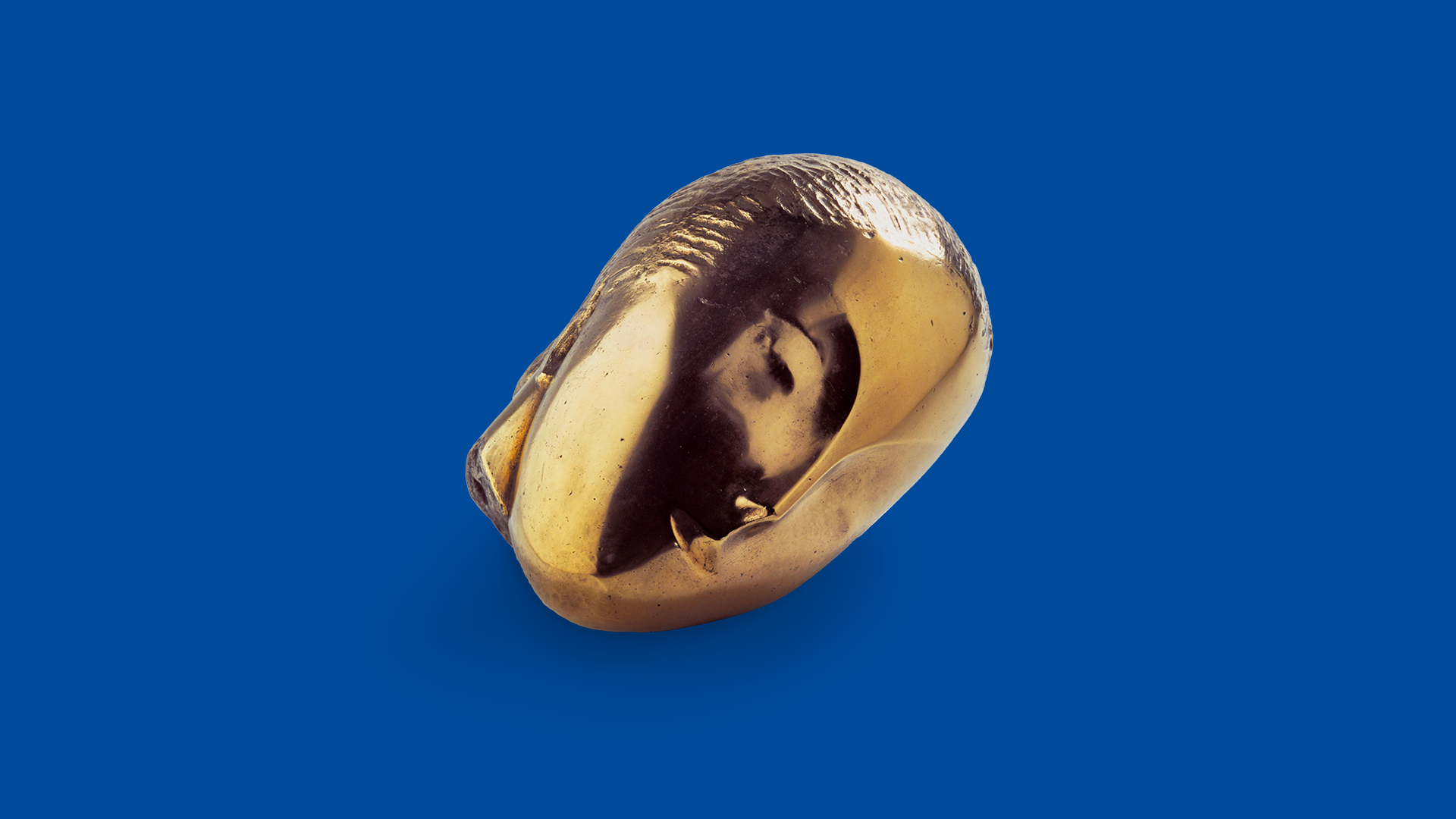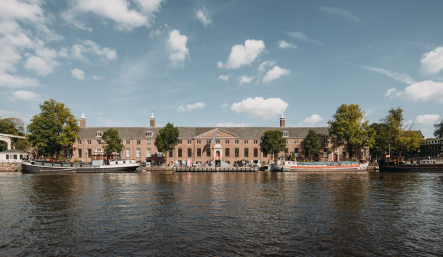H’ART Museum and Centre Pompidou present grand exhibition in Amsterdam: Brancusi, The Birth of Modern Sculpture
3 July 2025
On Saturday, September 20, H’ART Museum will open a grand exhibition in collaboration with the collections from the Centre Pompidou: Brancusi, The Birth of Modern Sculpture. This landmark presentation brings to Amsterdam an exceptional collection of works by Constantin Brancusi (1876–1957), who is widely regarded as the father of modern sculpture. Exploring the different facets of his art, the exhibition displays more than 30 sculptural masterpieces, accompanied by the original pedestals created by the artist, as well as his photographs and films. Centre Pompidou rarely lends these very fragile pieces, making this a unique event.
The exhibition marks the next chapter in the multi-year partnership between H’ART Museum and Centre Pompidou. It is also the very first solo exhibition of Brancusi’s work in the Dutch capital and the second to be held in the Netherlands (the only other retrospective was in The Hague in 1970).
These exceptional loans are made possible by the extensive renovation of Centre Pompidou and the long-standing partnership between the museums in Paris and Amsterdam. Giving the Dutch a once-in-a-lifetime opportunity to explore Brancusi’s unparalleled oeuvre. The collection originates from the artist’s original studio, which he bequeathed in its entirety to the French state in 1957. Making Centre Pompidou the custodian of the world’s largest and most comprehensive Brancusi collection.
Read here the complete press release.

About the Exhibition - a tribute to the father of modern sculpture
The exhibition unveils the major themes and motifs that Brancusi would constantly explore for five decades. It sheds light on his distinctive creative process, including his choice of direct carving and his talent to bring out ‘the essence of things’. The sculptures, with their smooth and pure forms, reflect his desire to go beyond appearances, to achieve a new and universal language. Celebrating his inventive power and tireless quest for beauty, the exhibition highlights the major revolutions brought about by Brancusi’s art: the reinvention of portraiture, the new status given to pedestals, the play with light and movement, and seriality.
The exhibition also highlights the diversity of his creative output, featuring not only sculptures but also a rare painting, more than 20 photographs and films by the artist. It also includes a film projection about the history of his studio, located on Impasse Ronsin in Paris. This iconic place, designed by Brancusi as a work of art in its own right, fascinated many of his avant-gardist contemporaries. To immerse themselves in the atmosphere of the studio, visitors will also be able to listen to musical excerpts from the artist’s record collection.
Visitors will follow a themed route organized around the artist’s major serial works he devoted his life to: the Essence of Things (Sleeping Muse, Head of a Sleeping Child, Sculpture for the blind), the Portraits (Eileen Lane, Mlle Pogany), the Animals (The Young Bird, The Cock, Seal), the relationship with Architecture (Endless Column, Caryatid), the Ambiguity between Feminine and Masculine (Princess X, Torso of a Young Man, Torso of a Young Girl), the play on Light and Movement (The Newborn II) and finally the series of The Kiss.
About Brancusi - the artist who revolutionized the history of sculpture
Over 120 years ago, a young artist set out on foot from his native Romania and journeyed across Europe to Paris. Here, Constantin Brancusi invented a whole new way of sculpting, a universal language using a direct carving technique to produce simple shapes. His work sparked great fascination among his contemporaries and friends like Marcel Duchamp, Fernand Léger, and Amedeo Modigliani. Departing from the tradition of modeling, he pioneered a new, poetic sculptural form that redefined modern sculpture.
Photography played an important role in Brancusi’s artistic vision. He began photographing his works in the 1910s for documentary purposes. But after meeting Man Ray around 1921, whose advice he sought, photography became more a medium for reflection on his sculpture, a revelation of his vision. Brancusi himself said, ‘Why write about my sculptures? Why not just show photographs of them?’ For this reason, he was very reluctant to let other photographers take pictures of his works.
Also, music and dance were part of Brancusi’s everyday life. He was a great music lover, a close friend of many composers, including Erik Satie, Darius Milhaud and Marcel Mihalovici. And friends who came to Paris to study dance, such as Lizica Codréano, created choreography in the artist’s studio. Over time, the studio itself became a pilgrimage destination for fellow artists and art lovers.
Exhibition catalogue
A comprehensive and richly illustrated catalogue (Dutch and English), published by WBooks, featuring special contributions from Ariane Coulondre (Curator, Modern Collections Department, Centre Pompidou), will accompany the exhibition. It will be available from the opening day at the museum, in bookstores, and online.
H’ART Museum and Centre Pompidou
The long-term partnership between H’ART Museum and the Centre Pompidou was announced in 2023, alongside the museum’s new name — formerly known as Hermitage Amsterdam. This cross-cultural collaboration launched in 2024 with the exhibition Kandinsky, which marked the grand reopening of the museum and its renewed mission: to bring world-class art collections to the Dutch capital through lasting partnerships with leading institutions such as Centre Pompidou. Together, H’ART Museum and Centre Pompidou will present more major exhibitions, each showcasing the Parisian museum’s excellence and iconic works, such as: Brancusi, The Birth of Modern Sculpture (2025–2026), Matisse (2026–2027), Surrealism (2027) and Fernand Léger (2028)
Brancusi, The Birth of Modern Sculpture is on show from Saturday September 20, 2025, until Sunday January 18, 2026. More information and tickets are available via hartmuseum.nl.
Notes for the editors, not for publication
Images are available upon request via pressoffice@hartmuseum.nl. The images provided by the museum can only be used in articles about this exhibition; credits are mandatory.
Credits, from left to right: (1) Constantin Brancusi, Sleeping Muse (1910). Purchased in 1947. © Centre Pompidou, MNAM-CCI/Philippe Migeat/Dist. GrandPalaisRmn. (2) Constantin Brancusi, Profile of a Woman with a Chignon, Face Inclined (c. 1924). Bequest of Constantin Brancusi in 1957. © Centre Pompidou, MNAM-CCI/Bertrand Prévost/Dist. GrandPalaisRmn. (3) Constantin Brancusi, The Endless Column III (c. 1928). Bequest of Constantin Brancusi in 1957. © Centre Pompidou, MNAM-CCI/Georges Meguerditchian/Dist. GrandPalaisRmn. (4) Constantin Brancusi, Torso of a Young Girl III (1925). Bequest of Constantin Brancusi in 1957. © Centre Pompidou, MNAM-CCI/Adam Rzepka/Dist. Grand-PalaisRmn. (5) Constantin Brancusi, The Cock (1935). Purchased in 1947. © Centre Pompidou, MNAM-CCI/Adam Rzepka/Dist. GrandPalaisRmn. All images: Collection Centre Pompidou, Paris. Musée national d’art moderne – Centre de création industrielle. © Succession Brancusi – All rights reserved (Adagp).
